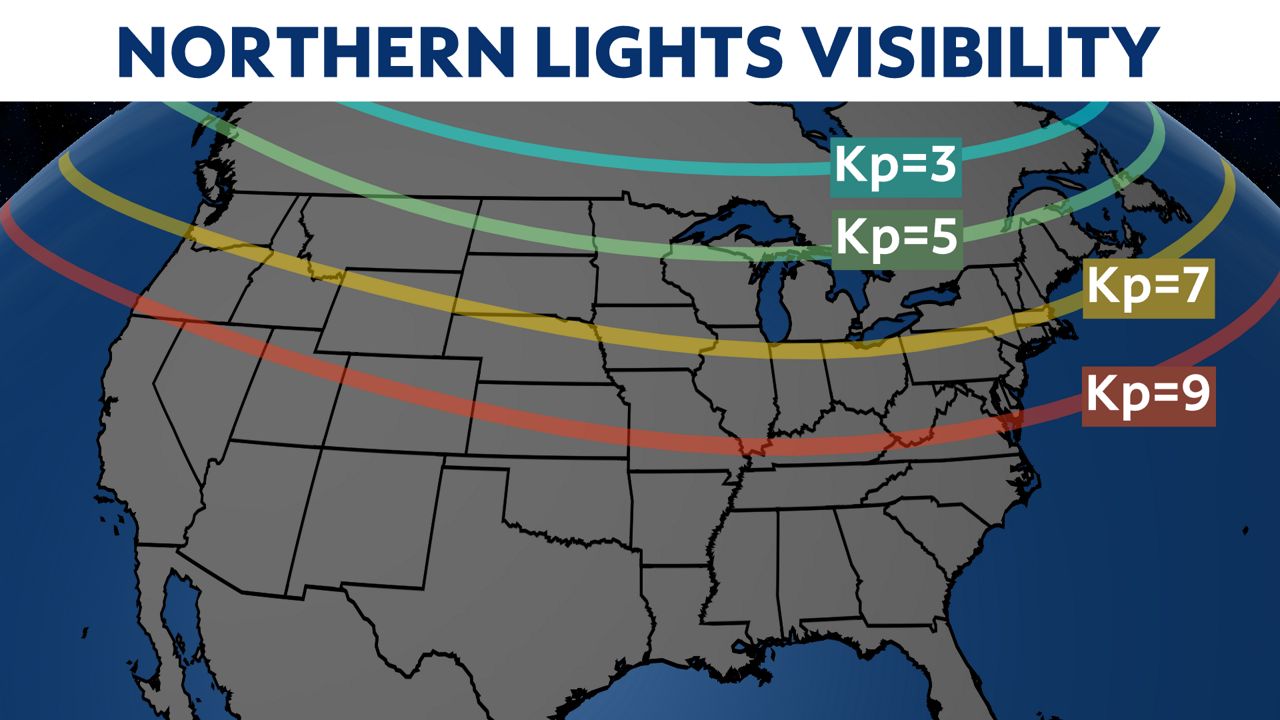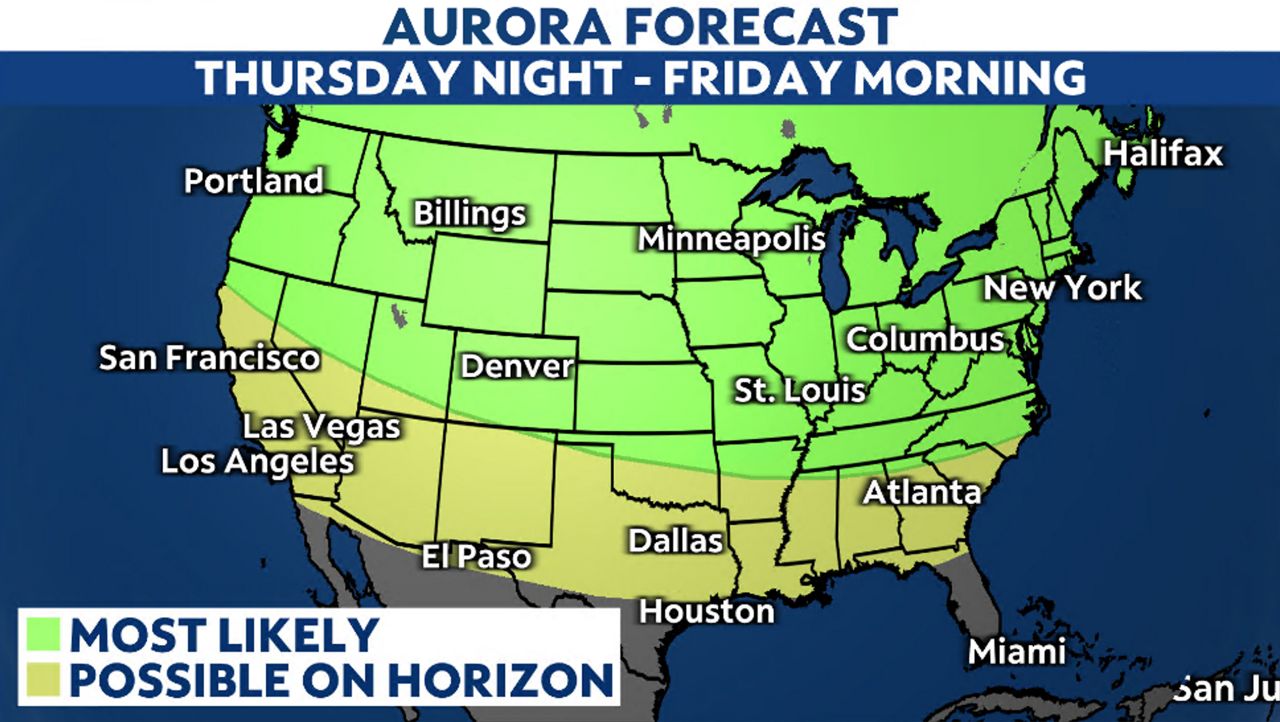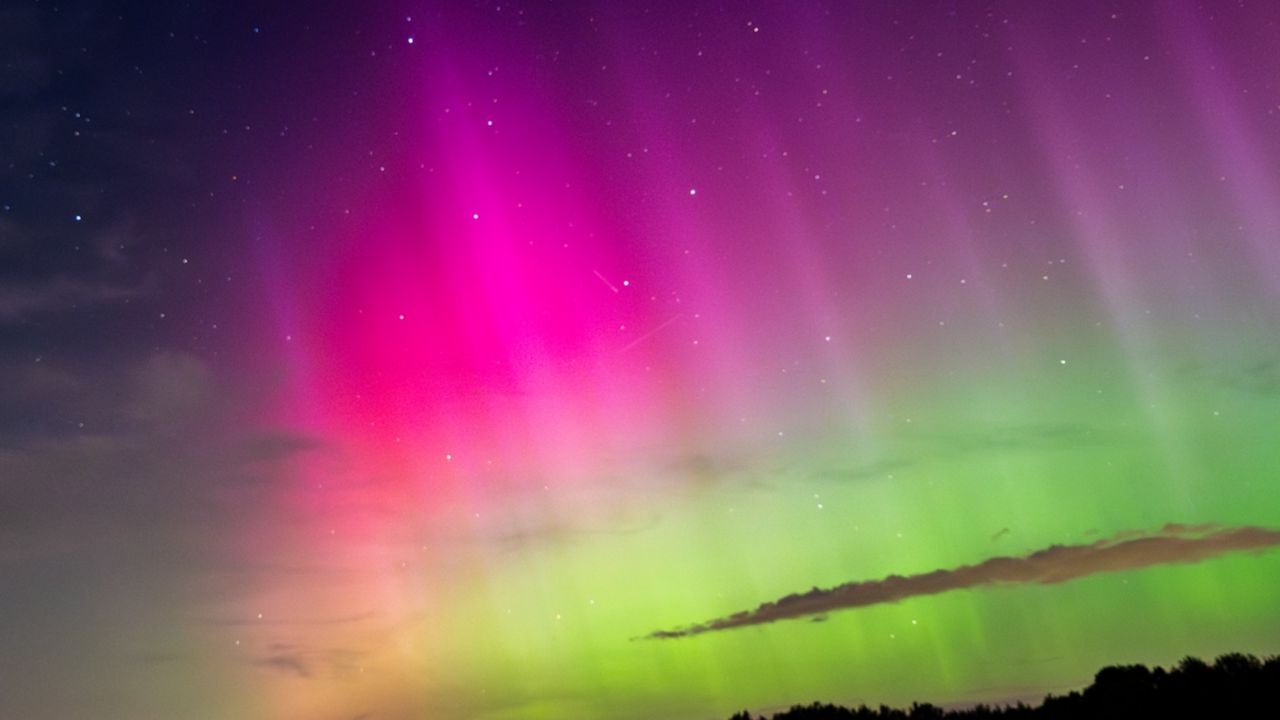NOAA’s Space Weather Prediction Center has forecasted a strong (G4) geomagnetic storm, meaning the northern lights, or aurora borealis, could be visible for much of the Mid-latitudes across the United States Thursday night through Friday morning.
A coronal mass ejection (CME) occurred earlier in the week. This eruption of solar material will arrive on Earth today, becoming a severe geomagnetic storm (G4) and could make the northern lights visible as far south as the Mid-Latitudes.
The sun is currently in an upswing of its 11-year solar cycle. Scientists notice more sunspots as they migrate toward the equator of the sun, and when their magnetic fields tangle, solar storms erupt.
Earth’s magnetic field acts as a buffer to keep particles and energy ejected from the sun at bay. However, if the solar storm is strong enough, those particles can penetrate the Earth’s atmosphere, giving off light, the auroras we see.
With such intense CMEs expected to arrive on Earth Thursday night, the severe storm might make the northern lights visible in Missouri, Oklahoma and even North Carolina. However, the better chance of viewing will be at higher latitudes.
The geomagentic storm magnitude is categorized by the K-index or the Planetary K-index. Kp is used by the Space Weather Prediction Center to send alerts and a good predictor of locations of the aurora borealis. A G4 storm can give off a Kp value of 8 or 9.

Here is tonight’s forecast from the University of Alaska Fairbanks Geophysical Institute. The northern lights are likely to be visible on Thursday night and early Friday morning for areas shaded in green, and they could be visible on the horizon for areas shaded in yellow.

To ensure the best chance at getting a look at the northern lights tonight, look toward the northern horizon. The best viewing conditions are under cloud-free skies and away from bigger cities with light pollution.
The best time to view the aurora borealis is 8 p.m and 3 a.m. Use the long exposure option on your phone or camera to get the best pictures.
This event could end up being similar to the northern lights event back in May of this year.
If you see the northern lights tonight, be sure to submit your photos on the Spectrum News App!
Our team of meteorologists dives deep into the science of weather and breaks down timely weather data and information. To view more weather and climate stories, check out our weather blogs section.



